This is the explanation of Cthulhu.
Click here for the previous article
I think "Cthulhu" is hard to understand.
I will explain each parameter.
The same part as a normal arpeggiator will be smoothed.
Cthulhu parameter explanation (Arpeggiator)
Arpeggiator is a tempo-synchronized effect.This means that your host transport should not be stopped, so your host must be playing in order to hear the arpeggiator.
Note tab
The note graph (pictured above) allows you to choose what happens at the steps of the arpeggiator.Click on any step and drag it up or down (from left to right) to see different symbols on the step.The upper half of the graph is a pattern of various arpeggiators, and like a typical arpeggiator, the note output changes continuously from step to step.
UP: Same as Up for a normal arpeggiator.
DOWN: Same as Down of a normal arpeggiator.
UP / DOWN: Same as UP / DOWN of a normal arpeggiator.
DOWN / UP: Same as DOWN / UP of a normal arpeggiator.
up and down: Raises all notes up and then down, playing the two extremes (highest and lowest) twice.
Below is the result of "Burn to midi".
There are two times, the highest note and the lowest note. (Although MIDI notes are quite short)
down and up: All notes are lowered and then raised to play the two extremes (highest and lowest) twice.
Below is the result of "Burn to midi".
It is the same except that "up and down" starts from the highest note.
fingered bottom:Every second note is the bass of the chord.
Below is the result of "Burn to midi".
All odd numbers are the lowest note.
fingered top: Every second note is the treble of the chord.
Below is the result of "Burn to midi".
All odd numbers are the highest notes.
The number of the chord note to play.
If you specify "5" for 6 chords, the first note will be played octave up again.
For example, enter the following XNUMX chords.
The ARP for "Cthulhu" is set as follows.
Below is the result of "Burn to midi".
The sixth is played on the first octave.
Cthulhu parameter explanation (Step)
To avoid making a sound, drag the relevant part below "1" to stop the sound.
You can also mute the gray part by clicking.
Pattern length
The green bar determines the length of the pattern.
Link Lengths:If you want to use the same length for all graph pages, you can use the link length switch.
The above description is in the manual, but I don't know how to use it.
There is no change even if the pattern is switched on and off.
Position Reset:If you alt-click a step in the lower area of the graph, you'll see a large green arrow above that step.This means that the arpeggiator will be reset at this step and play the first note of the arpeggiator pattern.
This is sober.
Depending on the synth, you can make a long note by lengthening the Gate and using "Position Reset".
Cthulhu parameter explanation (Tab)
Rand Sel tab
The Rand Sel tab displays a graph that allows you to set the random step selection for each step in the sequence.The default is half the vertical position of the graph, which is not randomized.Click below or above half to see a purple vertical bar that snaps by unit.It allows you to set the amount of randomization for each step.The larger the size of the purple bar, the more randomness will be applied.
For example, if the Note Sel step is set to 2 and the random value is set to 2 above the middle, Arp will be “2”, “3”, “4” each time this step occurs. Outputs one of the values of. (2nd, 3rd, 4th note of the input chord) is output.
Cthulhu allows you to specify a random range to some extent.
(Random control is possible than Phrasebox)
Octave tab
Select this to display the octave pattern.This allows you to transpose ± 8 octaves from the calculated output notes.The default value is along the center and no octave transposition is applied.
Pitch tab
You can use the pitch graph selector to transpose notes in semitone steps.However, this has a special feature that may take a minute (or an hour) to understand (depending on your background in music theory).
Simply put, transposition applies only to the frequency of the selected scale.This allows you to change the chord without transposing the root note or fifth note of the chord (for example, just enable '5' on the Pitch Enable button and it will go from minor to major. Transposition etc.).
Cthulhu analyzes the chords you enter to determine what the root of the chord is, even if the chord is played inversion.For example, a GCE triad is determined to be a C (major) chord, like CEG, and a CEG, like EGC.This route information is used on the pitch graph.When you select a pitch graph (upper part of the figure, green), a number is displayed on the pitch enable button (lower part of the figure).Click this number to turn it green (enable) and select which scale of the entered chord you want to pitch transpose.When all seven buttons are enabled, the pitch graph transposes all notes in that chord.
Pitch Enable button
When you select a pitch graph (upper part of the figure, green), a number is displayed on the pitch enable button.Click this number to turn it green (enable) and select which scale of the entered chord you want to pitch transpose.When all seven buttons are enabled, the pitch graph transposes all notes in that chord.
I don't know if it's a bug, but I don't think this feature is working properly.
I may not understand the specifications, so I will investigate a little more and add it.
Vel scale tab
The Vel scale tab allows you to scale the velocity step by step.This can produce interesting variations if the destination instrument is set to respond to velocity (for example, velocity mapped to a filter cutoff).
Gate tab
Gate tabs reduce the duration of steps.The default is 100% (the blue vertical bar is fully visible and the duration does not change).This is useful for shortening notes at specific steps or adding rhythmic movements to the output sound.
Late tab
The Late tab changes the timing of the triggered step to be earlier or later.This allows you to customize Arp's swing feel, for example by intentionally making certain steps faster or slower.
Harmony tab
The Harmony tab adds a second note that is output at a particular step.This is useful if the synth you are looking for is polyphonic (you can have multiple notes played at once).This note is relative between one octave below and one octave above the output pitch of this step.
This is good, you can easily make a mysterious harmony.
Cthulhu parameter explanation (additional function of Arp)
① Arp Patterns
arp memorizes 12 separate patterns at a time.In the pattern selector, you can see which patterns are selected, active, or not in the default state.For example, in the figure above, pattern B is selected (lit in green) and patterns A to D contain pattern data (green instead of gray).
Click the letters A to L to select and display the current pattern for use.
② Retriever switch
When this feature is enabled, Arp will be retriggered when a MIDI note is received, and playback will resume from this moment.
③ Link Lengths switch
When this switch is enabled, the graph pattern length bars are linked so that the length changes on all graph pages.This means that if you want all chart pages to have the same length, you don't have to set the length for all eight chart pages.
I didn't know before this, but it is a switch that allows you to select whether the length of the graph pattern in the sequence pattern is individual or linked.
④ Chord Mode
When chord mode is enabled, Arp outputs all input notes, but transposes it upwards to produce the lowest note.This is useful for creating “code arpeggios”.
⑤ Clock Div
The number box to the left of Clock Div slows down the playback speed of the currently selected graph.This number represents the denominator of the playback speed of the displayed graph (eg "2" = 1/2 speed, "4" = 1/4 speed, etc.).
I prepared a video.
In the above video, the MIDI when Clock is 1 is as follows.
In the above video, the MIDI when Clock is 2 is as follows.
Raising the Clock slows down the playback speed of the sequence, and the same sound is played until the next sequence is reached.
⑥ Copy / Pasta / Rand
The three buttons to the left of the clock division are Arp's copy, paste, and random buttons, respectively.These buttons only work for the currently selected graph.If you want to copy the entire pattern (all graphs), drag the pattern button / letter (eg A) to the desired location (eg B).
I took a video.
If you want to copy the entire pattern OTHER Hold down the key and drag the alphabet to the desired location.
Summary
It's pretty amazing.
I thought that Phrasebox was better for the ARP part, but there are quite a few functions unique to Cthulhu, and it seems that it can be used properly.
It is quite convenient to be able to switch patterns with MIDI notes, and it is suitable for creating new phrases.
I will write the details separately, but it looks like this.
Cthulhu also turns into a pretty good phrase generator.
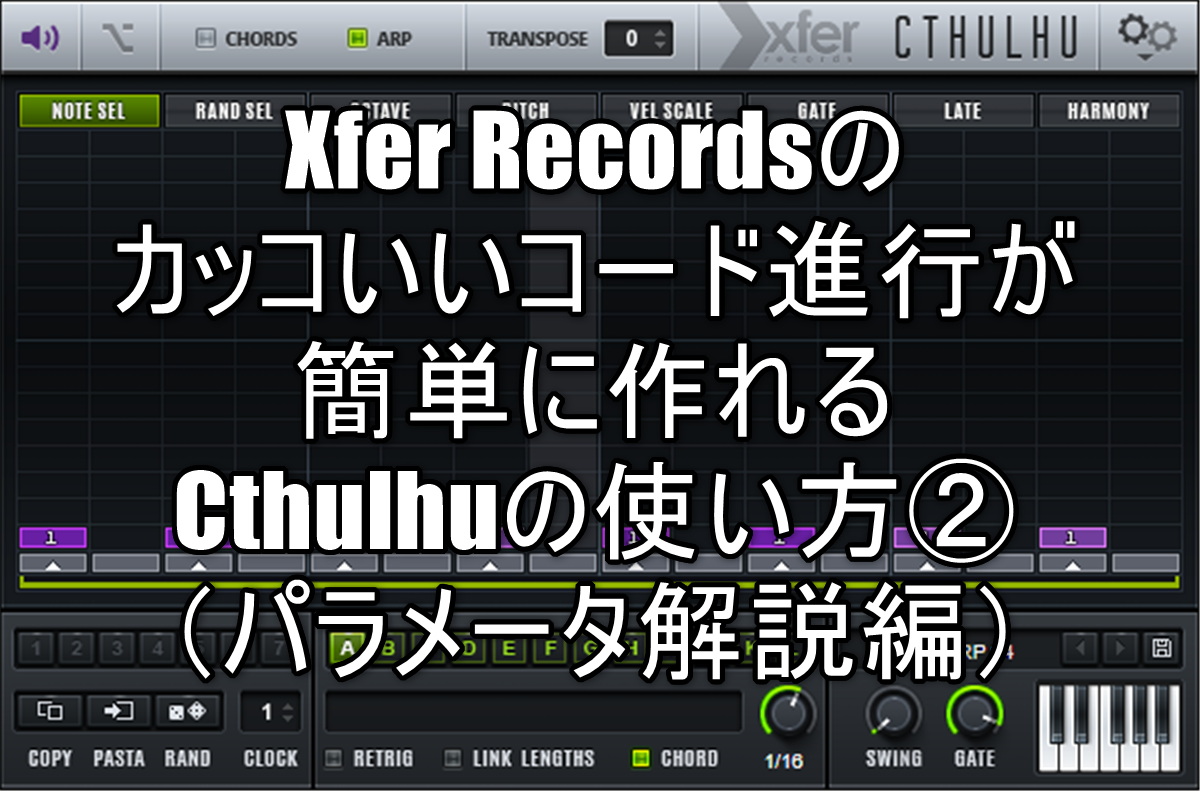
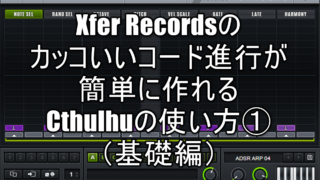
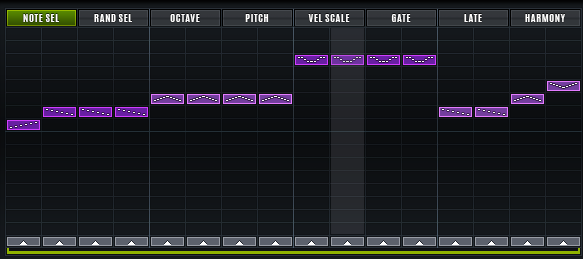







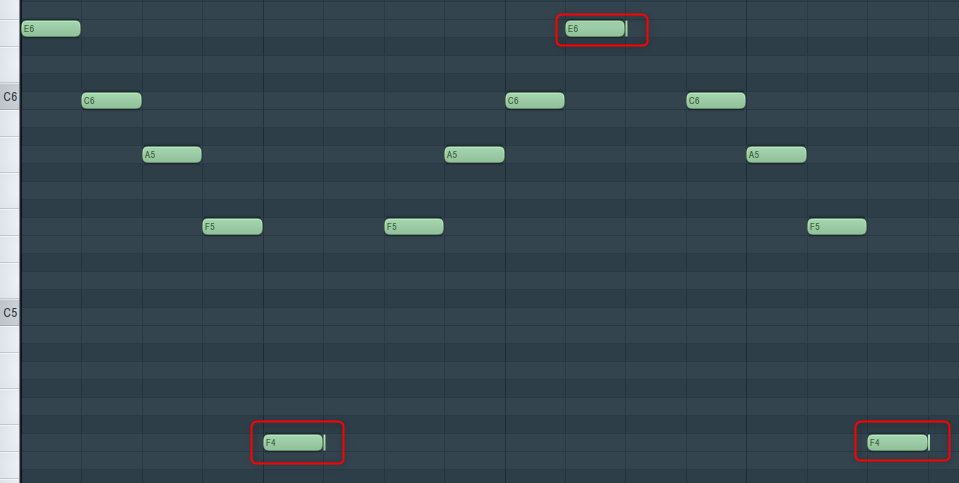

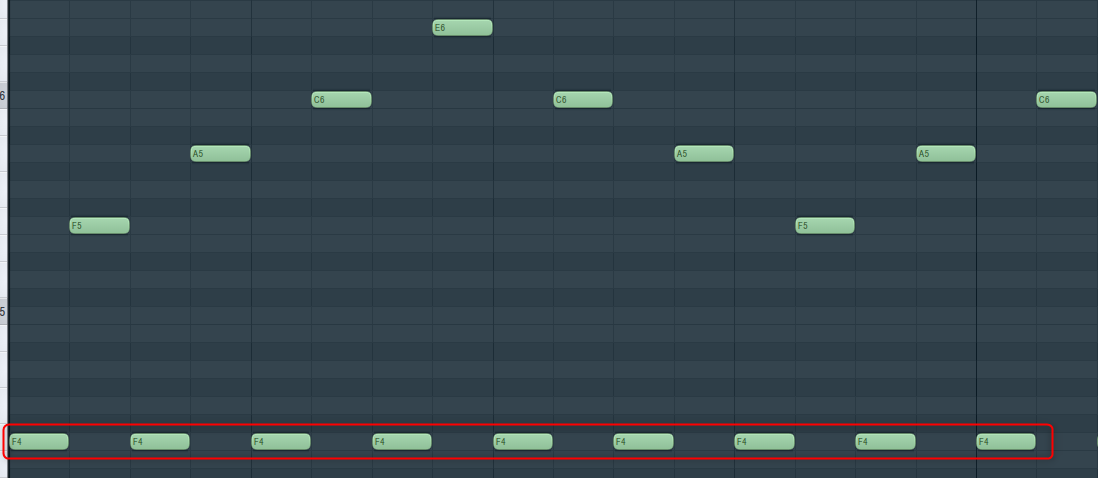

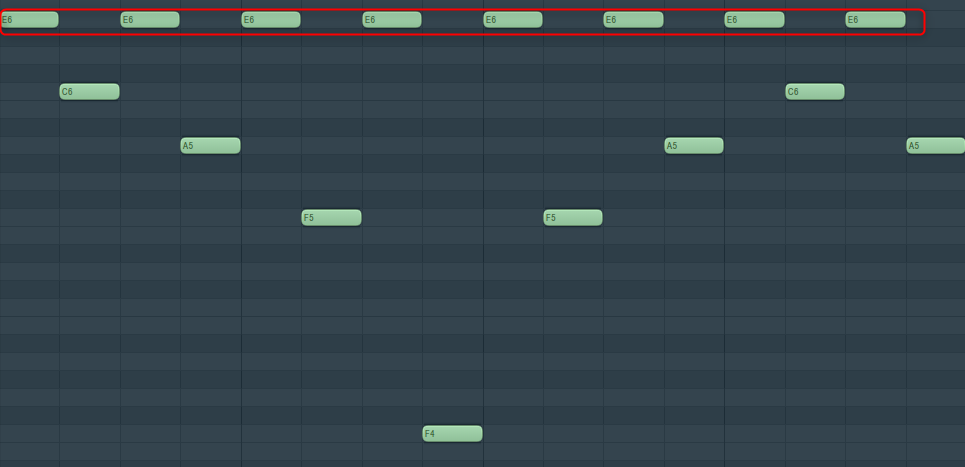



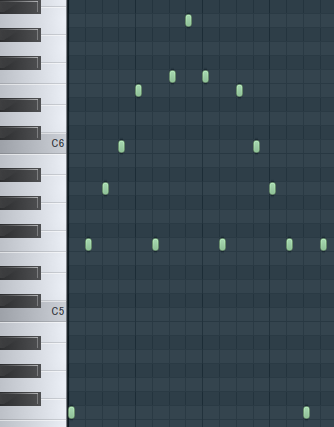

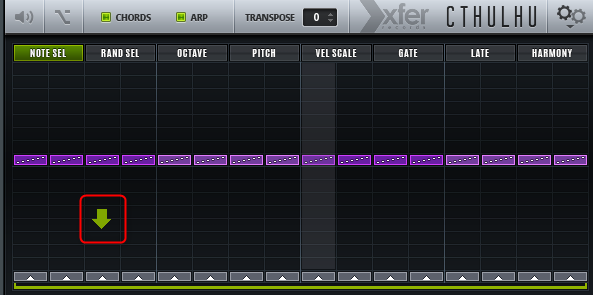



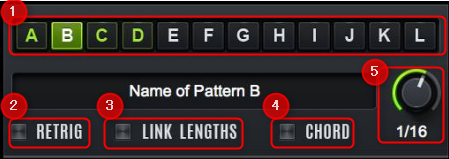
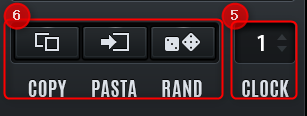


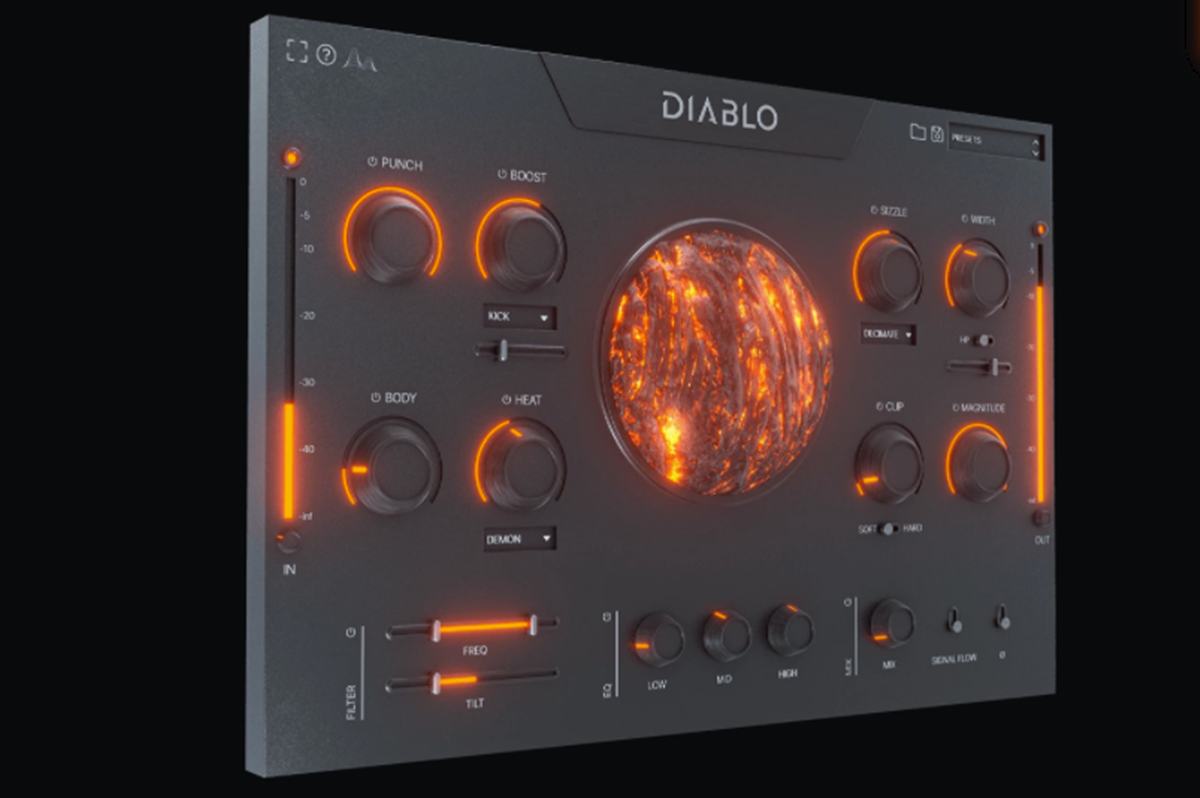
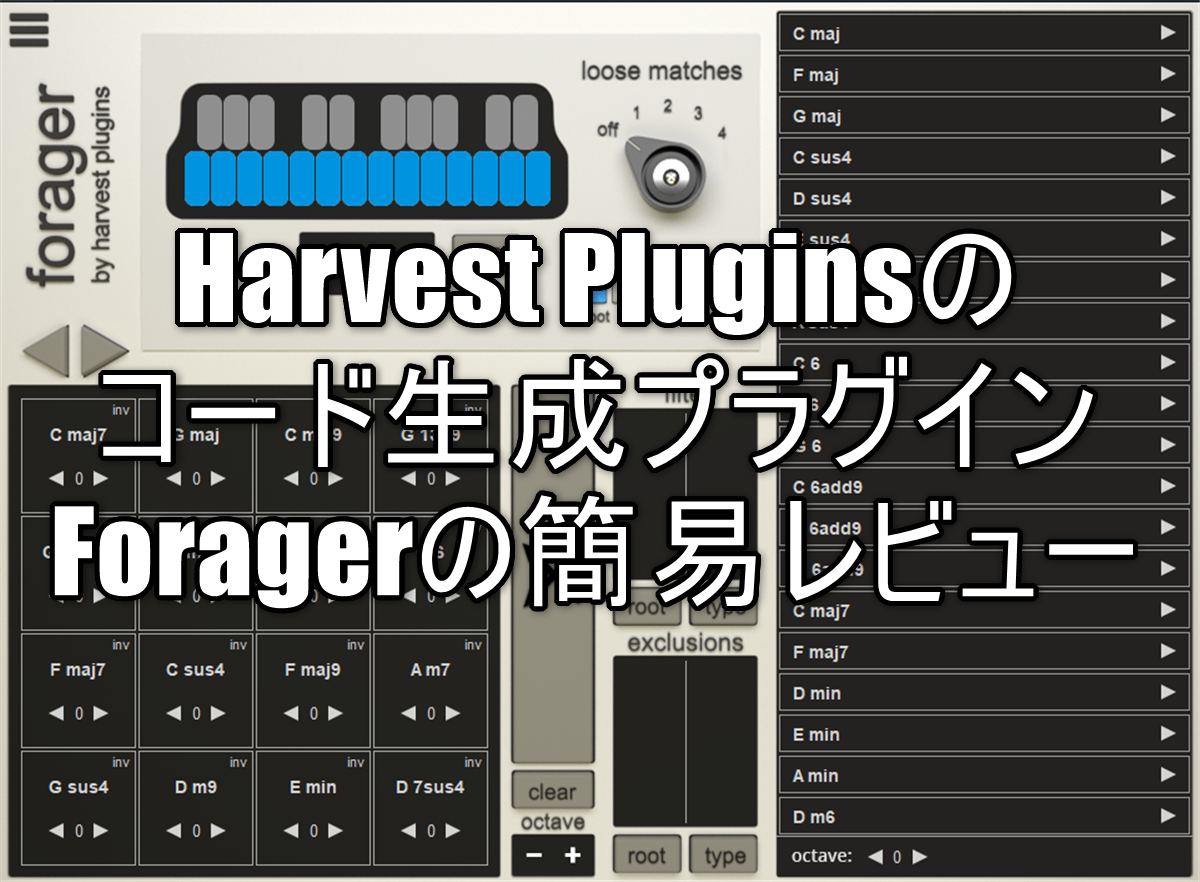
Comment